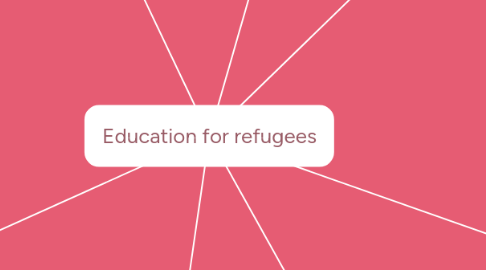Education for refugees
by Ana Bozic


1. Everyone has the right to education
1.1. Education is key to brighter futures for refugee children – and for all of us.
1.2. Classrooms provide a safe space for children
1.3. Education as protection
1.4. Advantages for girls
2. NGOS Involved:
2.1. UNHCR
2.2. UNICEF
2.3. IOM UN MIGRATION
2.4. UNHCR, UNICEF and IOM would like to acknowledge the support of the European Union, Government of Japan, Government of the United Kingdom, Government of United States, Governments of EU Member States, as well as UNICEF Global Humanitarian Thematic Funding partners34 in making this publication possible and their ongoing support to the refugee and migrant education response in Europe.
3. CHALLENGES AND GAPS
3.1. Legal barriers
3.2. Administrative challenges
3.3. Insufficient human and financial resources
3.4. Psychosocial support
3.5. Additional language and cultural mediation support
3.6. Early school leaving due to not obligatory education after the age of 16.
3.7. Language barriers and difficulties with concentration and learning resulting from painful personal experiences.
3.8. Poverty
3.9. Stereotypes and judgement
3.10. The lack of adequate support.
3.11. Limited opportunities for adolescents
3.12. Lack of documentation
4. United Nations Role and Support
4.1. Technical assistance to governments
4.2. Education supplies
4.3. Child rights monitoring
4.4. Awareness raising and sensitization of the local communities
4.5. Non-formal education and after-school support
4.6. Scholarships
5. Promising Practices at National and Local Level
5.1. Securing the right to education for every asylum-seeking child in Sweden
5.2. Preventing early school leaving in the Netherlands
5.2.1. Encouraging irregular migrants in Portugal to send their children to school
5.3. Fostering migrant and refugee ‘role models’ in Denmark
5.4. Mitigating financial disadvantages for migrant and refugee children in Estonia and Belgium
6. All European States that were affected by the 2015-2016 refugee and migrant crisis due to:
6.1. 1.War
6.2. 2.Poverty
6.3. 3.Desire for a better future
6.4. 4.Religion and Nationality
7. Access to education for refugees
7.1. Today, there are around 3.7 million refugee children out of school – more than half of the 7.1 million school-age refugee children.
7.1.1. At primary level, 63 per cent of refugee children are enrolled in school, compared to a global level of 91 per cent.
7.1.2. • At secondary level, 24 per cent of refugees are in school, compared to 84 per cent of secondary-age children worldwide.
7.1.3. At higher level, the figures are 3 per cent for refugees and 37 per cent for non-refugees.

